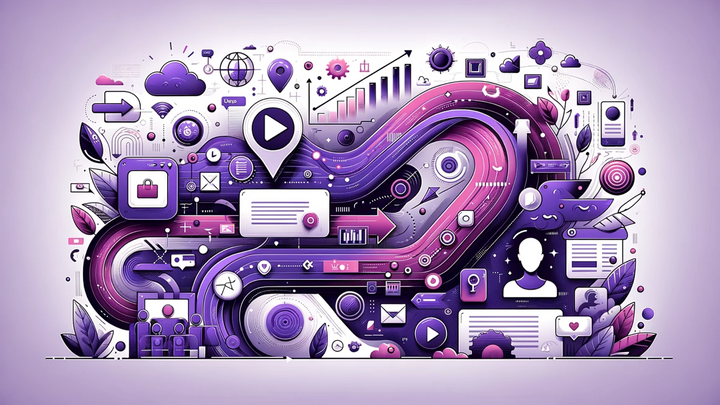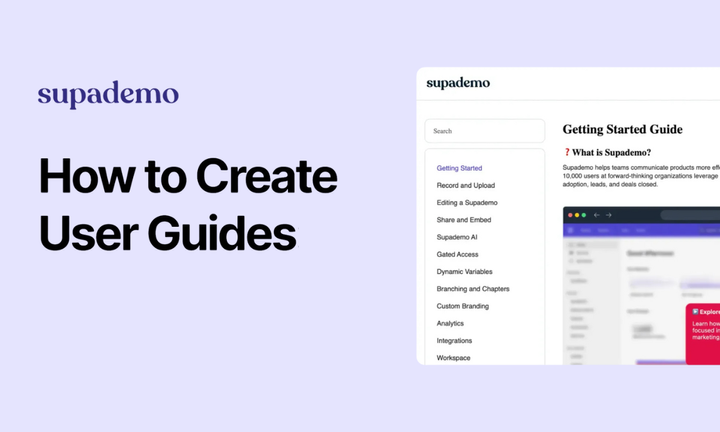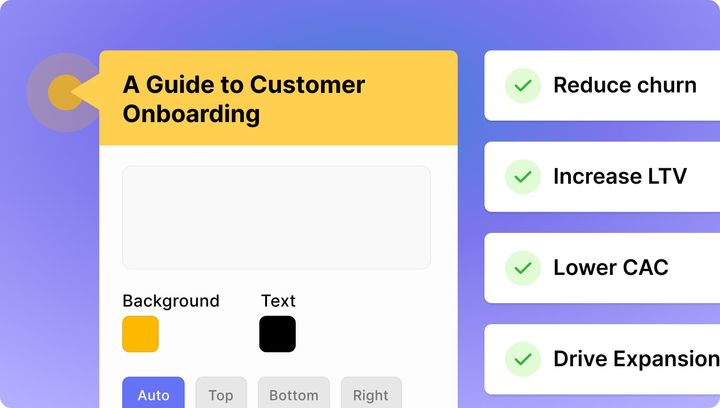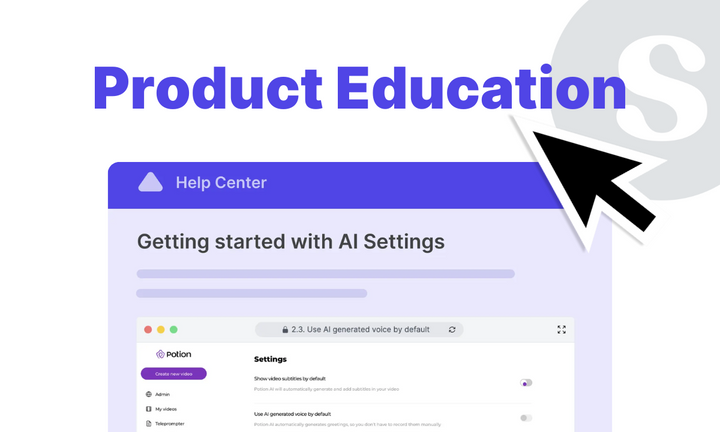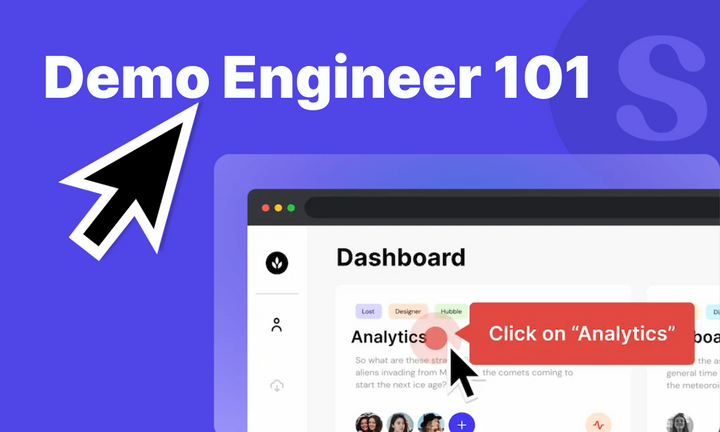86% of customers stay more loyal to companies that invest in onboarding content. But at the same time, 70% of new users abandon a SaaS product within the first week because they can’t figure it out.
That’s the difference a great onboarding experience makes — it can turn new users into long-term customers or push them out the door.
In this blog, we’ll walk through actionable steps to design onboarding flows that actually work, along with real-world examples you can adapt to your own product.
Let’s dive in.
TL;DR
- Analysis of successful companies like Figma, Slack, Notion, and Dropbox reveals they all prioritize learning-by-doing over passive tutorials—users start accomplishing real tasks from day one.
- Avoid common mistakes like one-size-fits-all flows, overwhelming users with features instead of benefits, and creating passive experiences that don't let users actually use the product during onboarding.
What is an onboarding flow, and why does it matter?
An onboarding flow is the strategic sequence that moves new users from signup to their first meaningful outcome with your product. It’s more than a quick product tour, it’s a carefully planned path that shows users what to do, when to do it, and why it matters.
The best onboarding flows eliminate the gap between a user's initial motivation for signing up and their first moment of real value. When done well, they lower drop-off rates, increase adoption, and set the foundation for long-term customer loyalty.
How to create a high-impact onboarding flow?
If you want your onboarding to be clear, engaging, and built for long-term retention, you need more than a welcome tour.
We’ve broken down exactly how to design a high-impact onboarding flow in 5 actionable steps.
Step 1: Research your users
You can't onboard someone you don't understand. Before designing any flows, figure out who's using your product and where they're getting stuck.
- Know your user types. Not every user is the same. Some want advanced features fast, others need hand-holding. Some are comparing multiple tools, others are committed to yours. Identify 3-4 distinct groups based on their experience level, goals, and how urgently they need results.
- Gather information during sign-up. Ask simple questions that help you understand what users want to achieve. Questions like "What's your role?" or "What brings you here today?" let users self-identify so you can tailor their experience from the start.
For example, Airtable asks its users what team they're on to create a customized workspace with relevant templates and features.

Step 2: Define your activation moment and success metrics
Once you understand your users, identify the exact moment they realize your product's value—your "aha!" moment. This isn't when they finish onboarding; it's when they accomplish something meaningful.
Look at user behavior data to find the action most connected to long-term retention. For example, in Slack, it's sending messages in multiple channels and collaborating with teammates. Your moment should be specific and achievable quickly.
Set measurable goals. Here's everything you need to track and measure at a glance:
Step 3: Map the minimal path to activation
Now that you know your activation moment, figure out the shortest route to get users there. Every extra step increases the chance they'll abandon.
- Work backwards from activation. Start with your activation moment and list every action users absolutely must take to reach it.
- Keep it to 3-5 core actions. Most successful apps limit their activation path to five steps maximum. More than that, and completion rates drop.
- Map the journey. Document each step, noting how it gets delivered (email, modal, tooltip) and what channel it uses. This exposes bottlenecks you can eliminate.
Step 4: Design the in-app onboarding experience
With your path mapped, guide users through it using the right mix of interactive elements, friction reduction, and psychological principles.
- Choose your guidance methods. Use interactive elements over static instructions. Tooltips that highlight next actions, hotspots that draw attention to key features, and interactive tutorials that let users complete tasks in-product work better than lengthy tutorials.
- Reduce friction at every step. Use smart defaults like pre-filling time zones or suggesting templates based on user type. Offer single sign-on to avoid password fatigue. Add "skip for now" options for non-critical steps.

- Build in quick wins. Give users immediate payoffs early on—a confirmation message, unlocking a feature, or showing a small success metric after their first action. This builds confidence and momentum.
- Personalize by segment. Show marketers campaign templates first, and designers prototyping features. Use the data you collected in Step 1 to welcome users with default setups that match their use case.
- Trigger guidance contextually. Don’t front-load all help. Reveal it where it’s needed: on first load, after a key action, or if someone hesitates for a few seconds.
Step 5: Measure, test, and iterate continuously
Your onboarding flow isn't something you build once and forget. It's a system that needs constant optimization based on real user behavior and performance data.
- Test one change at a time. Don't redesign everything when completion rates drop. A/B test individual elements like button copy, step order, or guidance placement. Small changes often yield big improvements.
- Use both data types. Analytics show where users drop off, but session recordings and user interviews reveal why. Watch how people actually navigate your flow versus what you intended.
- Optimize high-impact areas first. If 50% of users abandon at step 3, focus there before tweaking later steps. Use funnel analysis to identify the biggest leaks in your flow.
- Iterate continuously. Review performance monthly and make incremental improvements. As your product evolves, your onboarding needs to evolve too.
Supademo provides comprehensive onboarding analytics. You can track completion rates, see how many users engage with each interactive walkthrough, pinpoint the exact steps where they drop off, and identify gaps in your content.
5 Real-world examples of effective onboarding flows
We've given an honest review of onboarding flows from 5 successful SaaS companies. You can learn what to do and what not to do while designing one for your product.
1. Figma
Figma's onboarding gets users productive within minutes through hands-on learning. Here's their approach:
- Use case identification: Three targeted questions about the user role and primary use case during sign-up to personalize the experience.

- Use-case-specific templates: Figma avoids the dreaded "blank page" syndrome by providing templates and examples based on the user's input during onboarding.

- Interactive contextual guidance: Bite-sized tooltips teach features while users work on real projects like importing files, using design tools, and inviting teammates.

- Revisitable onboarding: Users can reset the onboarding process through the help center to revisit concepts later.
Figma prioritizes immediate hands-on value over comprehensive tutorials. Users start creating and collaborating from day one, building confidence through actual accomplishment rather than passive instruction.
2. Slack
Slack's onboarding gets teams communicating within minutes through a collaborative demonstration. Here's their approach:
• Smart personalization: A Simple survey asking for the team name and what they're working on helps Slack personalize the experience and creates the first channel name.

• Slackbot-guided walkthrough: New users are greeted with a chatbot that walks them through an interactive tour of main features while helping set up their account and first channel.

• Collaboration-first approach: Slack is keen to get new users to understand the basics of creating channels and sending messages, and heavily encourages inviting teammates.

• Learning through doing: Onboarding tips are conveyed through interactions with the Slackbot, which teaches users how to use the platform by using the platform.
Slack prioritizes team collaboration over feature tours. The final step rewards users with a success message for sending their first message, creating a clear path from signup to value through actual communication.
3. Notion
Notion's onboarding creates personalized workspaces through smart use case detection and hands-on learning. Here's their approach:
• Use case identification: Survey segments users based on intended use cases like personal, school, or team, to customize the experience from signup.

• Learn-by-doing approach: The Getting Started page lets users learn by using the product through a fully functional checklist with clear instructions.

• Progressive disclosure: Introduces features at the right time instead of overwhelming new users upfront with everything at once.
• Contextual guidance: High-contrast tooltips appear when users hover over elements, providing instruction as they explore independently.
Notion uses its own product as the onboarding tool—the Getting Started guide is actually a Notion page, demonstrating the platform's flexibility while solving the dreaded "blank page syndrome" that often intimidates new users of complex tools.
4. Dropbox
Dropbox's onboarding demonstrates immediate file sync value through seamless cross-device setup and two-way synchronization. Here's their approach:
• Personalization through data collection: Short onboarding form collects use case, company size, and industry data to personalize the experience and enrich accounts for sales prioritization.

• File upload focus: Actionable welcome announcement is singularly focused on getting users to make their first file upload—critical to unlocking all subsequent Dropbox value.
• Progressive checklist: Onboarding checklist opens by default in the bottom left, actively guiding users to key actions while teaching them where to find progress tracking later.

Dropbox prioritizes experiencing sync functionality over explaining features. Users complete a full cross-device workflow during onboarding, ensuring they understand the core value proposition through hands-on demonstration rather than theoretical explanation.
5. ElevenLabs
ElevenLabs' onboarding personalizes the voice generation experience through smart data collection but leaves users to explore advanced features independently. Here's their approach:
- Smart data collection: ElevenLabs asks new users a short survey during signup to create a personalized experience and pre-configure their workspace.

- Starter templates and prompts: The platform provides sample text prompts and use case examples (like podcast intros, character voices, or narration) to help users immediately understand practical applications and get their first voice generation.

- In-app demo: The voice isolator feature has an in-app demo showing how the feature works, displaying only the output humorously through a traditional video. This is good, but it could have been even better if they had shown exactly how to use the feature.

Overall, the sign-up process is clear, but once you're in the app, you're left to explore on your own, which for some users might be difficult to understand. What could have been better is if ElevenLabs' onboarding flow included in-app product tours that would trigger when users explore a new feature.
Common mistakes to avoid while designing onboarding flows
After analyzing hundreds of SaaS onboarding flows, we've seen a common pattern of mistakes made by companies ranging from early-stage startups to billion-dollar software companies.
Here are the common mistakes to avoid:
- Highlighting features instead of benefits: Simply listing features rarely inspires action. Instead, show how each one directly solves a user’s problem, delivers value, and makes their work faster or easier.
- Skipping a warm and personalized welcome: A thoughtful welcome creates trust and sets the tone for the relationship. Personal touches help users feel valued and confident about moving forward.
- Leaving out progress bars or onboarding checklists: When users can see their progress, they are more likely to finish onboarding. Visual indicators keep momentum high and guide them toward their first win.
- Using confusing or overwhelming dummy data: Too much placeholder content can create confusion. Use clear, minimal examples to illustrate the purpose and explain exactly how users can add their own data.
- Treating all users with a one-size-fits-all flow: Different users have different goals. Tailor onboarding to each role or use case so everyone gets the most relevant path to value.
- Showing empty states without guidance: An empty screen can feel like a dead end. Use that space to provide examples, instructions, or next steps that lead users into meaningful action.
Ready to build better Onboarding flows?
Most onboarding experiences are passive—users watch videos without actually touching the product. Supademo creates interactive elements like clickable hotspots and branching scenarios where users actively navigate through real workflows.
You can build personalized experiences for different user segments without coding. A single demo branches into different paths, automatically showing relevant features to marketers versus developers.
The multi-demo showcase feature bundles several short demos into one shareable link, perfect for self-serve onboarding where users jump between topics based on their immediate needs.
This creates just-in-time learning—users access specific demos when they encounter new features rather than sitting through comprehensive upfront training. Instead of passive consumption, users practice actual workflows.
Ready to create onboarding flows that activate users instantly? Try Supademo today!
FAQs
How do I define the right user activation moment?
Pick one specific action that best predicts early retention (e.g., invite 1 teammate, create first project from a template). Use cohort analysis to see which first-week behaviors correlate with 7–30 day usage. Aim to make this action achievable in minutes.
How long should onboarding be?
Keep the “minimal path to value” to 3–5 essential steps. Use progressive disclosure so advanced features appear later, and add “skip for now” on anything non-critical. Short, task-based guidance beats long, linear tours.
What is an onboarding flow chart?
An onboarding flow chart is a visual diagram that outlines every step a new user takes from signup to their activation moment. It shows the exact sequence, branching paths for different user segments, delivery channels (e.g., in-app tooltips, emails), and key decision points. This helps teams quickly spot friction, streamline the journey, and improve onboarding completion rates.


